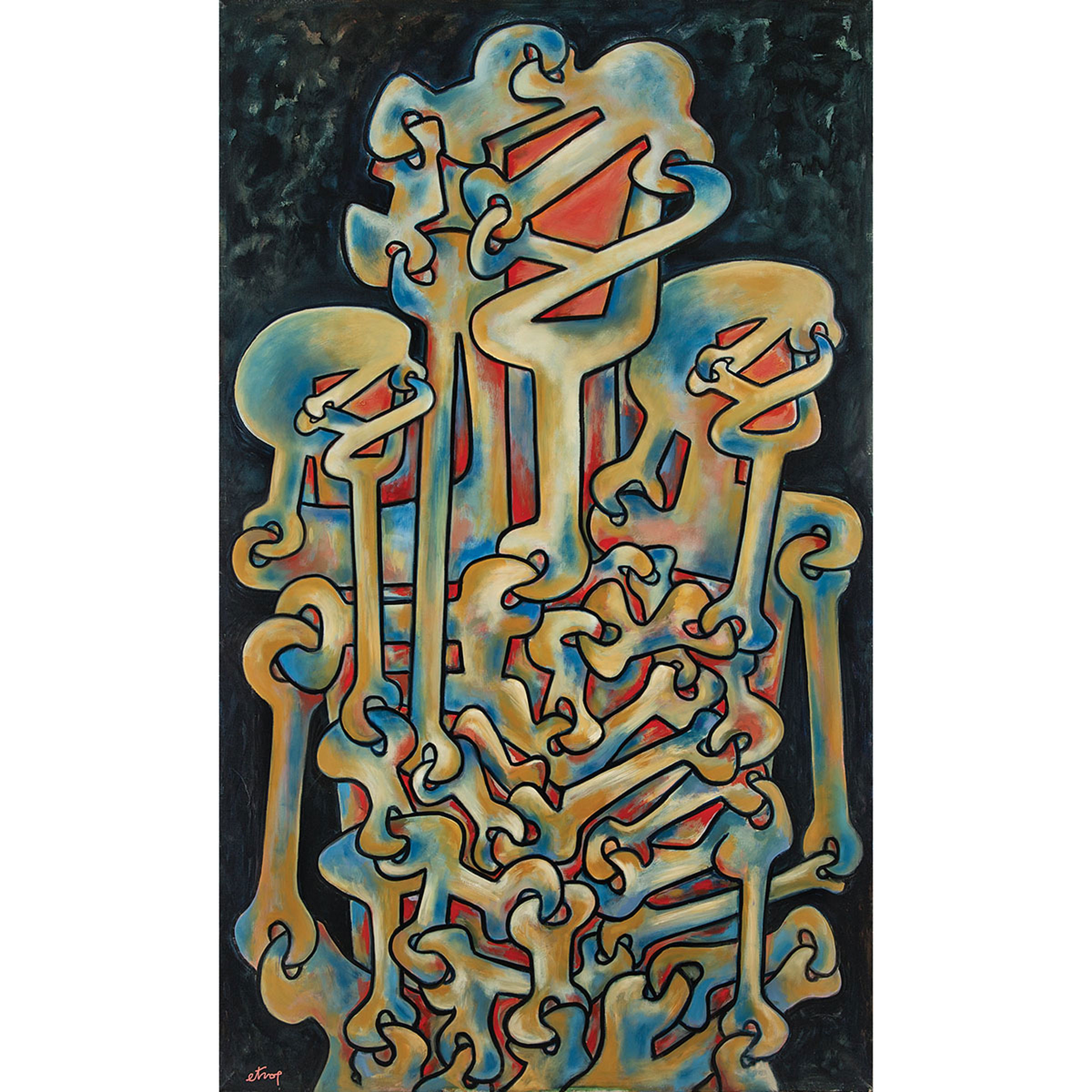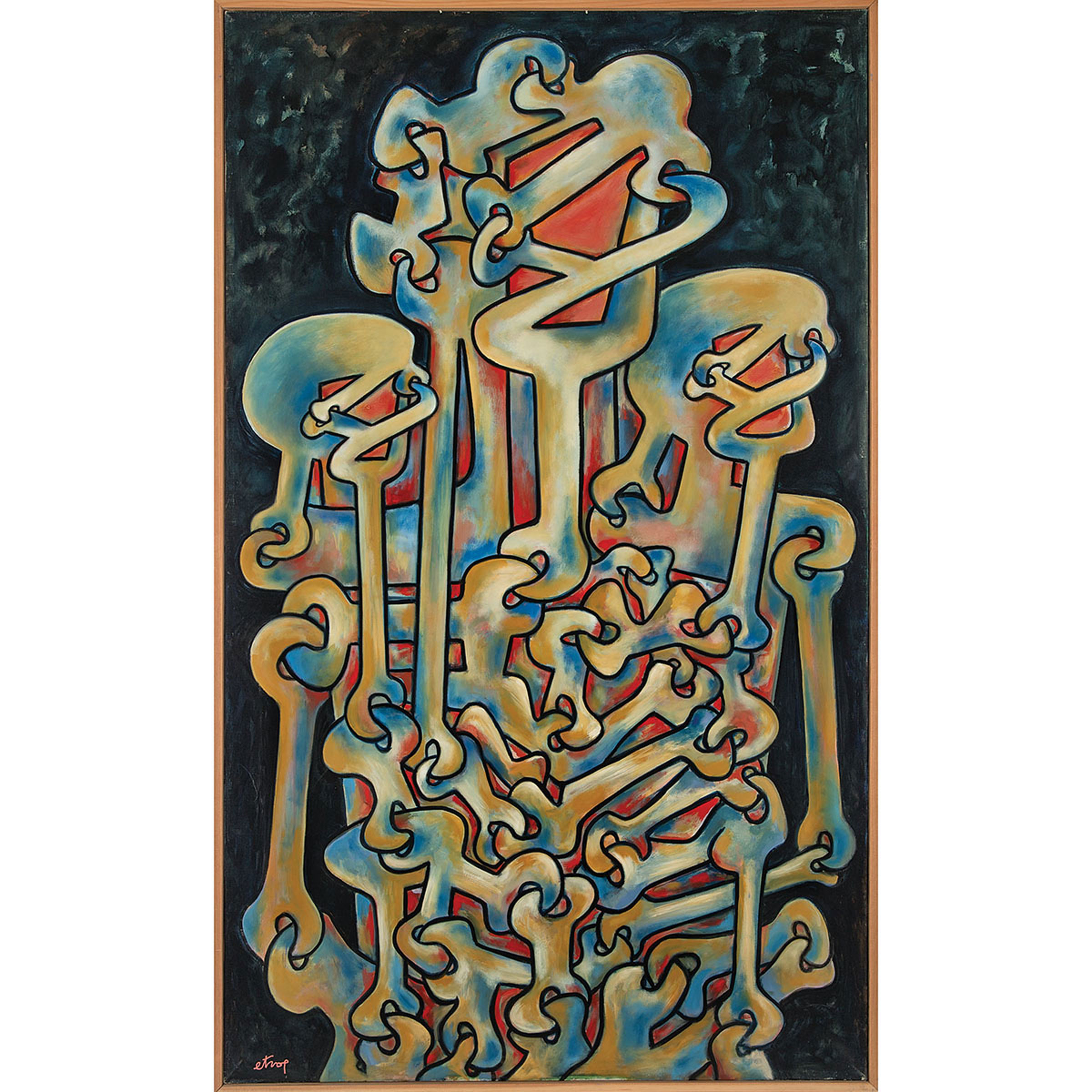Lot 91
SOREL ETROG, R.C.A.

Additional Images

Provenance:
Estate of the artist
The Friends of the Canadian Museum for Human Rights, Winnipeg
Literature:
Pierre Restany, Sorel Etrog, Prestel, Munich, London, New York, 2001, page 21.
Joyce Zemans (intro.), Sorel Etrog, Painting and Drawings 1963-1971, Simon Fraser University Gallery/ Buschlen Mowatt Gallery, B.C., 2008, page 35, for Biafra, reproduced in colour.
Ihor Holubizky (ed.), Sorel Etrog: Five Decades, Art Gallery of Ontario, 2013, for Biafra, reproduced in colour.
Note:
The title of this extraordinary 1968 painting by Sorel Etrog (1933-2014), unambiguously positions it as a response to what is among the greatest humanitarian crises of the twentieth century - the Nigerian Civil War, also known as the Biafran War.
While the Nigerian Civil War, like all wars, had its share of atrocities: pogroms, property loss and mass displacement, the images that are indelibly etched in the minds of a generation of people who grew up in the sixties is that of starving little children with distended bellies who appeared on the nightly news. History now views the forced starvation of Biafrans (using land and sea blockades) during the civil war as a genocide.
This was not Etrog’s first foray into the subject of extreme suffering caused by a shortage of food. It was also a subject with which he may have had personal experience as a child in Romania during the second World War. As Pierre Restany notes, “the first painting (Etrog) did in Israel in the early 1950s depicts a young mother, her face emaciated, in a refugee tent holding her child in her arms. Where her stomach should be lies a gaping hole...”
The Biafran War lasted from 1967 to 1970. There had been an element of religious strife to it: Biafrans were largely Christian and the Nigerian federal government was largely controlled by Muslim leaders. This may have stirred up memories for Etrog from his own past. But contemporaneously, Canada was having its own experience of minority groups seeking self-determination. Quebec separatists had rioted in Montreal on St. Jean Baptiste Day in June 1968. And in August 1968, after Warsaw pact troops invaded Czechoslovakia, thousands sought refugee status from Canada.
Yet, in the face of deep despair, Etrog’s Biafra is a message of hope. It may symbolize the pride and courage of an ethnic minority group (shown here standing shoulder to shoulder in solidarity) who sought the right to self determination. It also reminds us of the religious, private and non-governmental organization who rallied to support the Biafrans, airlifting in food, aid workers and medical supplies to support the beleagured civilian population. And perhaps the great lasting outcome of this war was the formation of Médecins Sans Frontières (MSF) which grew out of the experience of front line French medical personnel who had been disillusioned by the weak or disorganized response they had witnessed from certain agencies during the war. The need for MSF or Doctors Without Borders would, unfortunately, only increase in the following decades.
Biafra, 1968 falls within Etrog’s so-called Links period which dates from 1963 to 1971). Links paintings appear only very rarely on the auction market; the artist is more widely recognized for his painted constructions and composites (see lot 146) and bronze sculptures (see lot 31 and lot 72).
This work is being sold to benefit the Canadian Museum for Human Rights, Winnipeg.



